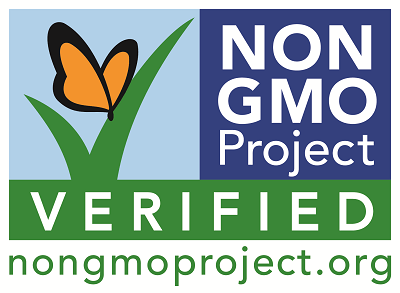The Benefits of the Butterfly Label
Everyone has the right to know what is in their food. The Non-GMO Project was founded on this simple principle more than a decade ago. In the years since, the organization has worked to preserve and build sources of non-GMO products, educate consumers, and provide verified non-GMO choices in order to give people in North America the all-important right to choose non-GMO.
Why We Still Need the Butterfly October is Non-GMO Month; a time to celebrate the progress the non-GMO community has made and spread awareness of the challenges it still faces. This Non-GMO Month, the Butterfly is more important than ever!
Consumers in the United States have demanded GMO labeling for more than two decades now. Polls have consistently shown that more than 90 percent of Americans want GMOs labeled. In Connecticut, Vermont, and Maine, voters rallied together to pass mandatory GMO labeling laws—until the federal government voided state-level laws by passing the National Bioengineered Food Disclosure Standard in 2016.
The Non-GMO Project has always supported GMO labeling as part of its strong belief in transparency. Unfortunately, the National Bioengineered Food Disclosure Standard is deeply flawed. Despite the reality that more than 80 percent of packaged consumer goods contain GMO ingredients, ubiquitous processed inputs such as beet sugar and canola oil would be excluded from labeling all types. Likewise, GMOs produced through new genetic engineering techniques (e.g., CRISPR, RNAi) are not yet commercially testable and would not bear a GMO disclosure under the proposed rule.
Under the proposed law, written disclosures would use the term “bioengineered” or the newly-invented acronym “BE” to indicate the presence of genetically engineered ingredients. Unlike “GMO food” or “GE food,” the term “BE food” is completely unknown. Bioengineered is not a word that people are familiar with and its abbreviation will only serve to further confuse shoppers. Other possible methods of disclosure include digital disclosures such as QR codes—which unfairly discriminate against the 100 million Americans who lack smartphones or high-speed internet—or the USDA’s proposed logos which feature biased imagery such as sunshine and winking smiley faces. GMO labeling that is not clear, inclusive, or meaningful will not provide consumers the GMO transparency that they have been fighting for all of these years. All of this goes to show that even when GMO labeling becomes mandatory in 2022, consumers who wish to avoid GMOs will still need to look for the Non-GMO Project Butterfly.
Transparency and Trust
While the Non-GMO Project will continue to lead efforts to ensure that this law is as meaningful as possible, it is clear based on what the USDA released that Non-GMO Project Verified will remain the most trustworthy and accessible way for consumers to avoid GMOs. The stringent testing, segregation, and traceability requirements in the Non-GMO Project Standard mean that Verified products have met North America’s most rigorous requirements for GMO avoidance. This month, look for the Butterfly when you shop to help protect our non-GMO food supply for future generations and to keep GMOs out of your home.
Happy Non-GMO Month!
For more information about the Non-GMO Project and their standards, visit NonGMOProject.org or GreenerChoices.org.










